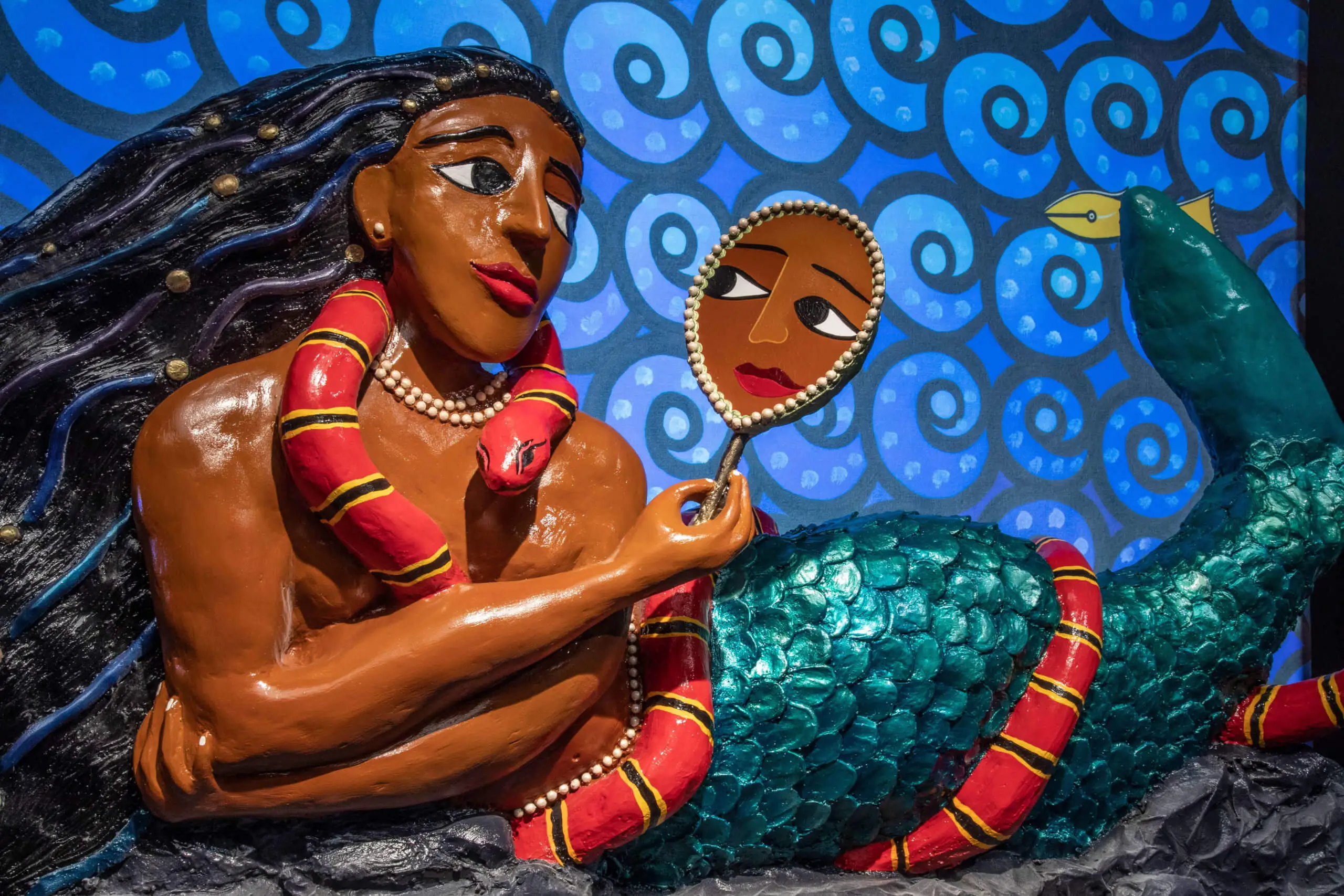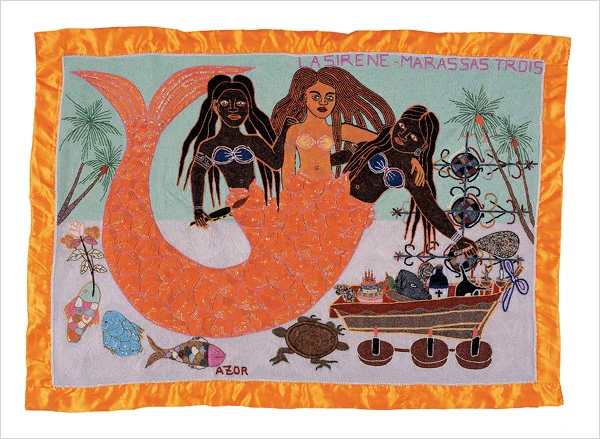Are you interested in knowing what Mami Wata is associated with? Do you want to know what Mami Wata is known for? Keep reading to know what Mami Wata is known for and what they are associated with.

Mami Wata, often referred to as the African Water Spirit holds a prominent place in the folklore and mythology of many West African and Central African cultures.
Also, this mysterious deity is known for her association with water bodies and is often depicted as a mermaid or a serpent-like figure with captivating beauty and allure.
Furthermore, Mami Wata’s intriguing nature has sparked the interest of anthropologists, historians, and enthusiasts worldwide.
In this article, you will get to know Mami Wata’s origins, characteristics, cultural significance, and the enduring impact she has had on various aspects of society.
The Origins of Mami Wata
The origin of Mami Wata can be traced back to diverse African cultural traditions, particularly in regions such as Nigeria, Ghana, Benin, Togo, and Cameroon.
Also, the name “Mami Wata” itself is a combination of the words “Mami” meaning mother, and “Wata” meaning water in Pidgin English, a widely spoken Creole language in West Africa.
Furthermore, Mami Wata’s origins can be found in the merging of indigenous African beliefs and the influences of colonialism, Christianity, and Islam.
What is Mami Wata Known for?

Mami Wata is known for her enchanting beauty and captivating presence.
Also, she is known to be a mermaid or a water spirit with long, flowing hair, fair skin, and a seductive gaze. In some representations, she possesses the lower body of a fish or a serpent, symbolizing her connection to water.
In addition, Mami Wata is believed to have the ability to shape-shift and can appear to individuals in various forms, tailoring her appearance to suit the observer’s desires.
Cultural Significance and Impact of Mami Wata in Africa

Mami Wata has influenced African culture in so many ways, here are some of them:
1. Influence on Art and Aesthetics
Mami Wata’s allure and mystique have inspired numerous artists, both within Africa and beyond, to depict her in various art forms.
Also, paintings, sculptures, and mixed media artwork often depict her as a central figure, emphasizing her beauty, power, and divine nature.
In addition, these artistic representations celebrate the cultural significance of Mami Wata. Also, it serves as a means of exploring themes of femininity, spirituality, and the connection between humans and the natural world.
2. Role in Healing and Divination Practices
Mami Wata plays a significant role in traditional healing and divination practices across Africa.
In addition, she is believed to possess healing powers and can grant fertility, prosperity, and protection to her devotees. Furthermore, rituals and ceremonies are conducted to communicate with Mami Wata and seek her favor.
Also, these practices often involve offerings, songs, dances, and the use of sacred objects such as shells, mirrors, and water vessels. Mami Wata’s devotees seek her guidance and blessings in matters of love, wealth, and spiritual well-being.
3. Symbol of Feminine Power and Sexuality
Mammy Water is often revered as a symbol of feminine power and sexuality. Also, her alluring beauty and seductive nature embody aspects of female empowerment and sensuality.
In addition, she challenges traditional gender norms and serves as a reminder of the strength and agency of women. Mami Wata’s portrayal as a figure of desire and allure can be seen as a celebration of female autonomy and the embrace of one’s personal power.
3. Adaptation and Continuity in the African Diaspora
The influence of Mami Wata extends beyond the African continent due to the African diaspora.
Also, as African cultures were carried across the Atlantic during the transatlantic slave trade, Mami Wata’s stories, beliefs, and practices traveled with the enslaved Africans.
Today, Mami Wata is revered in Afro-Caribbean, Afro-Latin, and African-American communities, where she is often incorporated into syncretic religious practices such as Vodou, Candomblé, and Santería.
In conclusion, the adaptability and continuity of Mami Wata’s worship in different cultural contexts highlight her enduring significance and ability to transcend borders.
Related Searches: